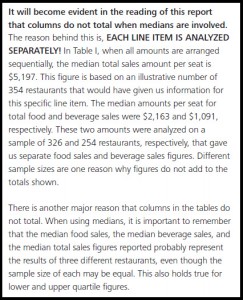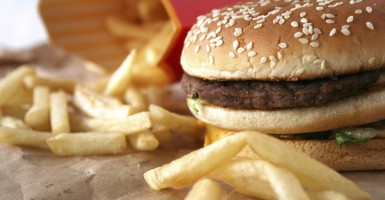If something seems too good to be true, it probably is. Unfortunately, many journalists did not remember that when covering a new report claiming that $15-an-hour wages would raise fast food prices only 4 percent.
A closer look shows that the study underlying the report had major methodological errors. More serious analysis shows that $15-an-hour wages would raise fast food prices by over a third—at least until stores automate work currently done by humans.
The study, by Purdue University economists Richard Ghiselli and Jing Ma, has made quite a splash. The Washington Post covered it extensively, concluding that the higher wages for fast food workers would add just 17 cents to the cost of a Big Mac. Local papers have covered it, too. ThinkProgress argued that the study undercuts arguments against $15-an-hour fast food wages. If the study were accurate, it would be hard to argue with them.
However, Purdue’s report offers a case study in why journalists should consult multiple sources before going to press. Simple back-of-the-envelope calculations show that the Purdue results are impossible.
Labor accounts for a quarter to a third of the average fast food restaurant’s costs. Currently, wages in the fast food industry run around $9 an hour. Going to $15 an hour means increasing pay by over 50 percent. Prices would have to rise by at least one-sixth (50 percent multiplied by one third) to cover the base-wage increases. Of course, those price increases would drive some customers away, so restaurants would need to raise prices again. But as a baseline, prices would have to rise by at least one-sixth.
The Purdue study finds price increases an order of magnitude smaller. It does so by making a basic math error. The Purdue researchers got their data from the National Restaurant Association’s (NRA) 2014 operations report. The report surveys restaurants and shows how much the median restaurant spends on various expenses, such as payroll, food, marketing, etc. The Purdue researchers added those figures to derive the balance sheet of the typical fast food restaurant.
Mathematically, however, medians do not work that way. Average values will add to the overall sum, but medians typically do not. The preface of the NRA Operations Report emphasizes in highlighted text that researchers cannot add median values to get overall expenses. Nonetheless, the Purdue researchers did exactly that.

The Purdue study proceeds to calculate how much wages would have to rise to pay $15 an hour and adds that amount (and a constant profit margin) to the undercounted expenses. They then compare this new (undercounted) figure to the sales of the typical restaurant. The missing expenses absorb two-thirds of the higher labor costs.
The Purdue study makes two other errors. The economists estimated that fast food workers make about $10.60 an hour—somewhat more than the Bureau of Labor Statistics reports. As a result, they underestimate how much restaurants’ labor costs—and hence prices—would need to rise.
They also ignored fast food customers’ price sensitivity. Most Americans eat fast food because it is fast and cheap. When prices rise, sales fall—a lot. Studies find that a 10-percent increase in fast food prices cuts sales by 9.5 percent. So fast food restaurants will need further price increases to cover fixed costs such as rent. In equilibrium, prices rise by about double the amount needed to initially cover the higher wages.
Last year, the Heritage Foundation estimated how a $15-an-hour minimum wage would affect fast food prices—accounting for all these factors. That report used data on average fast food balance sheets, relied on BLS wage estimates, and accounted for customers’ price sensitivity. This model found very different results: Prices would have to rise 38 percent to cover the higher wages, while sales and employment would both fall by over a third.

In the longer term, fast food restaurants would almost certainly react by replacing humans with machines. McDonald’s is already experimenting with replacing cashiers with kiosks. California inventors have developed a robot that cooks 360 hamburgers an hour. Mandating higher wages guarantees that restaurants will implement this technology more quickly and automate more jobs than they otherwise would. That will mean lower prices, but fewer entry-level jobs.
Milton Friedman famously observed that “there is no such thing as a free lunch.” He could have added “or a free burger.” Increasing fast food wages by over 50 percent will substantially raise fast food prices—until those jobs get automated. The new report claiming otherwise was, in fact, too good to be true.
Originally published in National Review Online.



























